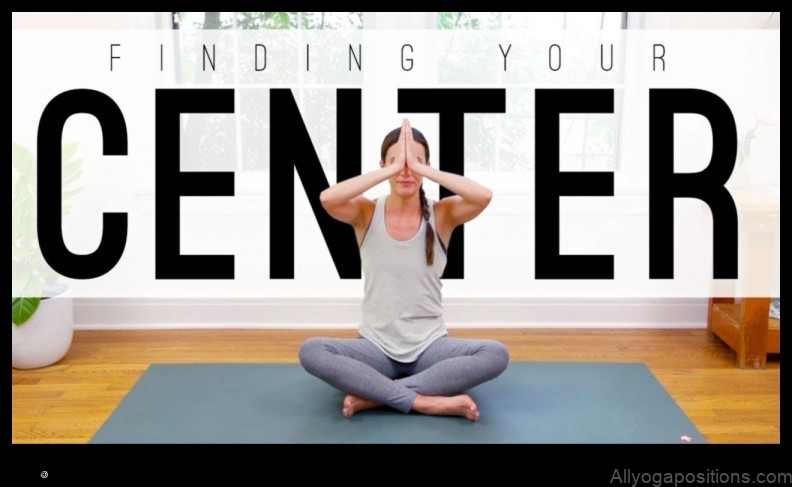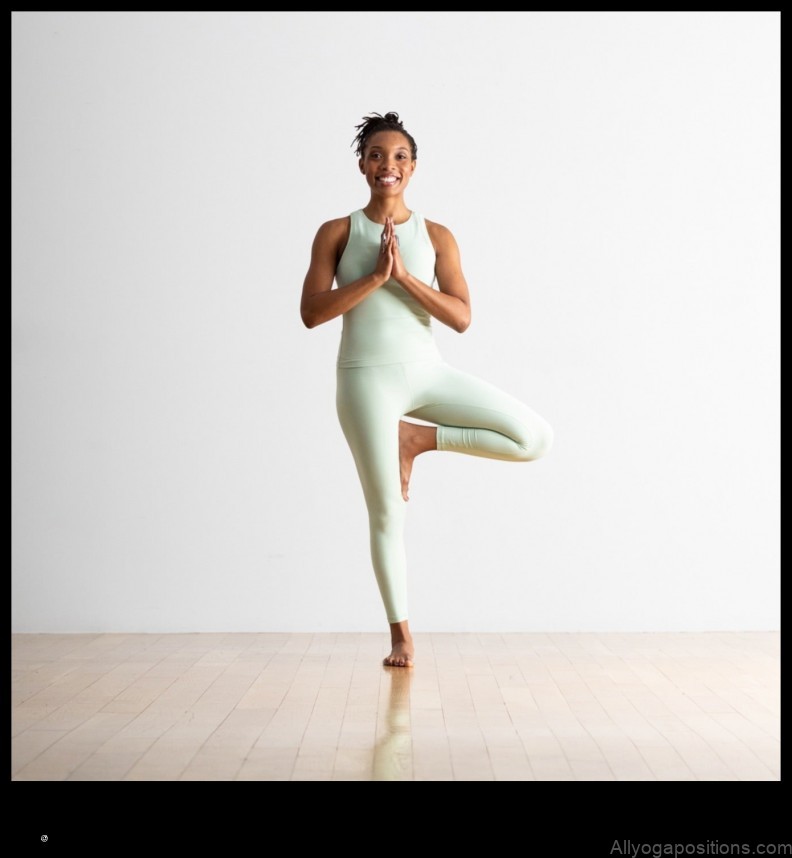
Yoga for Balance and Coordination
Yoga is a great way to improve your balance and coordination. It can help you to stay steady on your feet, improve your posture, and reduce your risk of falls. Yoga can also help you to improve your coordination in sports and other activities.
This article will discuss the benefits of yoga for balance and coordination, the different types of yoga poses that can help you to improve your balance and coordination, and tips for how to improve your balance and coordination through yoga.

Benefits of Yoga for Balance and Coordination
Yoga can offer a number of benefits for balance and coordination, including:
- Improved balance
- Improved coordination
- Reduced risk of falls
- Improved posture
- Increased flexibility
- Reduced stress
- Improved mood
Types of Yoga Poses for Balance and Coordination
There are many different yoga poses that can help you to improve your balance and coordination. Some of the most common poses include:
- Tree pose
- Warrior II pose
- Half moon pose
- Crow pose
- Handstand
These poses are all challenging, but they can also be very rewarding. If you are new to yoga, it is important to start slowly and gradually work your way up to more challenging poses.

How to Do Yoga Poses for Balance and Coordination
When doing yoga poses for balance and coordination, it is important to focus on your breath and to relax your muscles. It is also important to listen to your body and to avoid pushing yourself too hard.
Here are some tips for how to do yoga poses for balance and coordination:
- Start slowly and gradually work your way up to more challenging poses.
- Focus on your breath and relax your muscles.
- Listen to your body and avoid pushing yourself too hard.
- Practice regularly to see the best results.

Common Mistakes to Avoid When Doing Yoga Poses for Balance and Coordination
There are a few common mistakes that people make when doing yoga poses for balance and coordination. These mistakes can increase your risk of injury and prevent you from getting the full benefits of the poses.
- Overstretching
- Holding your breath
- Bouncing in the poses
- Pushing yourself too hard
To avoid these mistakes, it is important to listen to your body and to practice with caution. If you are unsure of how to do a pose, it is best to ask a qualified yoga instructor for help.
Tips for Improving Your Balance and Coordination Through Yoga
There are a few things you can do to improve your balance and coordination through yoga. These tips include:
- Practice regularly
- Focus on your breath
- Relax your muscles
- Listen to your body
- Have fun!
Yoga is a great way to improve your balance and coordination. It can help you to stay steady on your feet, improve your posture, and reduce your risk of falls. Yoga can also help you to improve your coordination in sports and other activities.
Yoga Balance and Coordination for Beginners
If you are new to yoga, it is important to start slowly and gradually work your way up to more challenging poses. Here are some yoga poses for balance and coordination that are perfect for beginners:
- Tree pose
- Standing forward bend
- Warrior II pose
- Half moon pose
- Reduce your risk of falls
- Prevent injuries
- Improve your athletic performance
- Be more graceful and agile
- Reduce stress and anxiety
- Improve your proprioception
- Increase your muscle strength
- Improve your flexibility
- Reduce your risk of falls
- Improve your posture
- Increase your overall mobility
- Practice regularly. The more you practice, the better your balance and coordination will become.
- Start slowly and gradually increase the difficulty of your poses.
- Focus on your breath. Breathing deeply and mindfully can help you to relax and improve your balance.
- Use props to support yourself as needed.
- Be patient. It takes time to develop good balance and coordination.
- Improved balance and coordination
- Increased flexibility
- Reduced stress and anxiety
- Improved mood
- Increased energy levels
- Start with simple poses and gradually increase the difficulty as you get stronger and more flexible.
- Focus on your breath and relax your muscles.
- Listen to your body and stop if you feel pain.
- Practice regularly to see results.
-
What are the benefits of yoga for balance and coordination?
-
What are the different types of yoga balance and coordination poses?
-
How do I do yoga balance and coordination poses?
-
What are some common mistakes to avoid when doing yoga balance and coordination poses?
-
How can I improve my yoga balance and coordination?
-
What are some tips for beginners who are trying to improve their balance and coordination?
-
What are some tips for intermediate practitioners who are trying to improve their balance and coordination?
-
What are some tips for advanced practitioners who are trying to improve their balance and coordination?
| Feature | Description |
|---|---|
| Balance | The ability to maintain your body’s equilibrium while stationary or moving. |
| Coordination | The ability to move your body parts smoothly and efficiently in order to perform a task. |
| Yoga | A mind-body practice that combines physical postures, breathing exercises, and meditation. |
| Flexibility | The ability to move your joints through a full range of motion. |
| Mindfulness | The ability to pay attention to the present moment, without judgment. |
II. Benefits of yoga balance and coordination
Yoga balance and coordination poses can help to improve your balance and coordination in a number of ways. These poses can help to strengthen your muscles, improve your flexibility, and increase your proprioception (the sense of where your body is in space).
Improved balance and coordination can benefit you in a number of ways. For example, it can help you to:
Benefits of yoga balance and coordination
Yoga balance and coordination poses can help you improve your overall balance and coordination. They can also help you reduce your risk of falls, improve your posture, and increase your flexibility.
Specifically, yoga balance and coordination poses can help you:
If you are looking for ways to improve your balance and coordination, yoga is a great option. It is a safe and effective way to improve your overall health and well-being.
IV. How to do yoga balance and coordination poses
Yoga balance and coordination poses can be challenging, but they are also very rewarding. When you practice these poses, you will improve your balance, coordination, and flexibility. You will also learn how to focus your mind and breathe deeply.
To do a yoga balance and coordination pose, start by standing with your feet shoulder-width apart. Inhale and raise your arms overhead. Exhale and bend forward at your waist, keeping your legs straight. Reach your arms down toward the floor and place your hands on your shins or ankles. Hold the pose for 5-10 breaths.
Inhale and raise your arms back up overhead. Exhale and step back with your right leg, coming into a lunge position. Keep your left leg straight and your right knee bent. Reach your arms forward and place your hands on the ground in front of you. Hold the pose for 5-10 breaths.
Inhale and step back up to standing. Exhale and step forward with your left leg, coming back into a forward bend. Hold the pose for 5-10 breaths.
To come out of the pose, inhale and raise your arms back up overhead. Exhale and straighten your legs, coming back to standing.
Repeat the pose on the other side.
When you practice yoga balance and coordination poses, it is important to listen to your body and not push yourself too hard. If you feel pain, stop the pose and rest.
Yoga balance and coordination poses are a great way to improve your overall health and well-being. By practicing these poses, you will become more flexible, coordinated, and balanced. You will also learn how to focus your mind and breathe deeply.
V. Common mistakes to avoid when doing yoga balance and coordination poses
Here are some common mistakes to avoid when doing yoga balance and coordination poses:
Not warming up properly. It is important to warm up your body before doing any yoga poses, especially balance and coordination poses. This will help to prevent injuries.
Overdoing it. It is important to start slowly and gradually increase the difficulty of the poses as you get stronger. If you try to do too much too soon, you are more likely to injure yourself.
Losing your focus. It is important to stay focused on the pose and your breath when doing balance and coordination poses. If you lose your focus, you are more likely to lose your balance and fall.
Not using props. Props can be helpful for beginners and for people who have balance or coordination problems. Using props can help you to get into the pose more easily and safely.
Being afraid to fall. It is normal to feel afraid of falling when doing balance and coordination poses. However, it is important to remember that falling is not dangerous. If you do fall, simply get back up and try again.
By avoiding these common mistakes, you can reduce your risk of injury and improve your balance and coordination.
VI. Tips for improving your yoga balance and coordination
Here are some tips for improving your yoga balance and coordination:
VII. Yoga balance and coordination for beginners
Yoga for balance and coordination is a great way for beginners to improve their overall fitness and well-being. These poses are designed to help you improve your balance, coordination, and flexibility.
Here are some of the benefits of yoga for balance and coordination for beginners:
If you are a beginner, it is important to start slowly and gradually increase the difficulty of the poses as you get stronger and more flexible.
Here are some tips for beginners:
If you are looking for a beginner yoga class, there are many resources available online and in your local community. You can also find many helpful books and DVDs on the subject.
Yoga balance and coordination for intermediate practitioners
As you progress in your yoga practice, you may find that you want to challenge yourself with more difficult balance and coordination poses. This section will provide you with tips and instructions on how to do some of the most challenging balance and coordination poses for intermediate practitioners.
Tripod Headstand
Tripod headstand is a challenging balance pose that requires strength, flexibility, and coordination. To do this pose, start by standing with your feet shoulder-width apart. Bend over and place your hands on the ground in front of you, shoulder-width apart. Step your feet up onto your hands so that your shins are resting on your forearms. Inhale and lift your legs up into the air so that your body is in a straight line from your shoulders to your feet. Keep your legs together and your toes pointed. Hold the pose for as long as you can, then slowly lower your legs back down to the ground.
Handstand
Handstand is a challenging balance pose that requires a lot of strength and flexibility. To do this pose, start by standing with your feet shoulder-width apart. Bend over and place your hands on the ground in front of you, shoulder-width apart. Step your feet up onto your hands so that your shins are resting on your forearms. Inhale and kick your legs up into the air so that your body is in a straight line from your shoulders to your feet. Keep your legs together and your toes pointed. Hold the pose for as long as you can, then slowly lower your legs back down to the ground.
One-Legged Crow
One-legged crow is a challenging balance pose that requires strength, flexibility, and coordination. To do this pose, start by standing with your feet shoulder-width apart. Bend over and place your hands on the ground in front of you, shoulder-width apart. Step your right foot up onto your left thigh. Inhale and lift your left leg up into the air so that your body is in a straight line from your shoulders to your feet. Keep your legs together and your toes pointed. Hold the pose for as long as you can, then slowly lower your left leg back down to the ground. Repeat on the other side.
Plank Pose
Plank pose is a challenging core strengthening pose that also requires balance and coordination. To do this pose, start by lying face down on the ground. Place your forearms on the ground shoulder-width apart, with your elbows directly under your shoulders. Inhale and raise your body up so that your legs, arms, and core are in a straight line. Keep your head and neck in line with your spine. Hold the pose for as long as you can, then slowly lower your body back down to the ground.
Side Plank Pose
Side plank pose is a challenging core strengthening pose that also requires balance and coordination. To do this pose, start by lying on your side with your legs extended in front of you. Bend your right knee and place your right foot on the ground in front of you. Place your left elbow on the ground directly under your shoulder. Inhale and raise your body up so that your left arm, left leg, and core are in a straight line. Keep your head and neck in line with your spine. Hold the pose for as long as you can, then slowly lower your body back down to the ground. Repeat on the other side.
IX. FAQ
Here are some frequently asked questions about yoga for balance and coordination:
FAQ
Q: What is the difference between balance and coordination?
A: Balance is the ability to maintain your body’s equilibrium while stationary or moving. Coordination is the ability to smoothly and efficiently move your body parts in relation to each other.
Q: What are the benefits of yoga for balance and coordination?
A: Yoga can help to improve balance and coordination in a number of ways. It can strengthen the muscles that support your body’s equilibrium, improve your proprioception (the sense of where your body is in space), and help you to develop better body awareness.
Q: What are some yoga poses that can help improve balance and coordination?
A: Some yoga poses that can help improve balance and coordination include:
* Tree pose
* Warrior II pose
* Half moon pose
* Standing balance pose
* Eagle pose
Table of Contents
